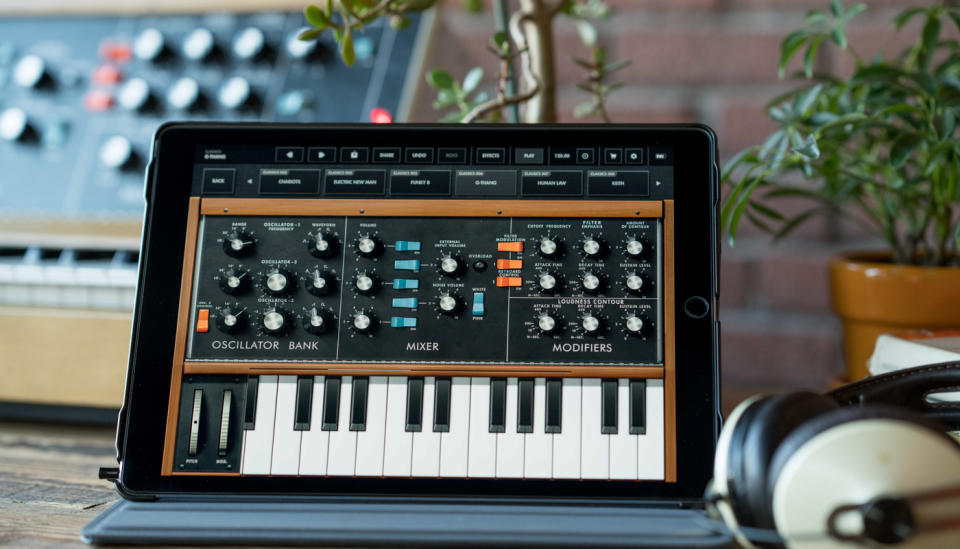The revolutionary Minimoog Model D synth is now available as an iOS app
It’s $3,744 cheaper than the hardware version.
From Kraftwek and Michael Jackson to Nine Inch Nails and Dr. Dre, the Minimoog has spanned musical genres and decades. Released in 1970, it was one of the first synthesizers to include a keyboard. It gave musicians the ability to step up to the instrument and start composing instead of figuring out the complex world of modular synths. Sadly, Moog (rhymes with vogue) ended production of the Minimoog Model D in 1981.
But then in 2016, Moog released a limited edition reissue of the Model D and while it's available for $3,749.00 ($3,499 street), as soon as the company runs out of parts, it'll stop shipping the keyboard. Of course with the price for a new one over three grand and the used price hovering around $2,500 the Minimoog Model D is bit out the range of hobbyists and a lot of musicians.
Fortunately, Moog has released the Minimoog Model D app for iOS for the rest of us. Sure you won't get the wood panels and metal front, but you will get a very impressive digital recreation of all the sounds that come out of the influential synthesizer.

The $4.99 (for a limited time) iOS app faithfully recreates the physical version of the Minimoog down to the wood beam that separates the knobs and the keys. Controls are straightforward. Knobs are twisted by tapping and sliding your finger up or down. Accessing additional effects like the arpeggio, delay and looper only require a tap of the FX button with those options sliding down from the top of the screen. As for actually playing, the 44-key keyboard can be slid up and down to reach the correct octave without too much trouble.
If you have a MIDI keyboard though, you can hook it up via an adapter or Bluetooth for better keyboard control of the app. With that in mind, you could very well use the app to play the quadraphonic digital version of the Minimoog live.
No matter how to play the app, it does lower the barrier to playing the instrument thanks to the sound presets Moog added. For example, the high keyboard part that permeates Dr. Dre's Chronic album has its own setting called G-Thang. There are also presets for Kraftwerk (Kraft Bass) and Parliament Funkadelic (Funky B).
So instead of twisting knobs for hours trying to recreate the sounds of the favorite songs, Moog as added them to the app with others available for purchase. These presets not only make it easy to jam to your favorite songs, but also offer up the ability to understand how oscillators, mixer, filters and other features can be manipulated to create sound.
If you can see what's been done to create a sound, you can build upon that to create your own unique tone without just randomly twisting knobs and pressing buttons.

My one issue with the app is that it's tough to read the control options on a smaller iPhone. After a weekend of playing with it on my iPhone 6s (because headphone jack), I'd recommend using a Plus-sized iPhone or iPad. Still, even on the small screen, it's tough to put it down.
Moog doesn't see the app as something that will get people to run out and buy the Minimoog Model D. But it does expect those that do use the app and encounter a Model D in the wild to be able to step right up and use it. So while a $3,000-plus synth might not be in your future, for $5 you'll have the confidence to know that if you do step up to a physical Minimoog you'll be able to play the bassline to Thriller.












